Sample Daily Work Schedules
-
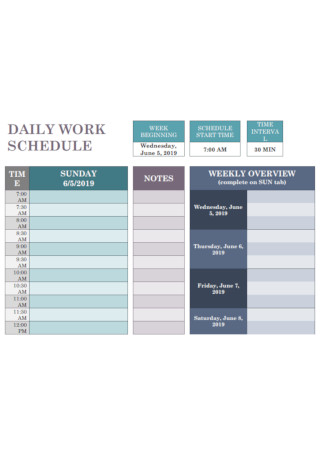
Sample Daily Work Schedule Template
download now -
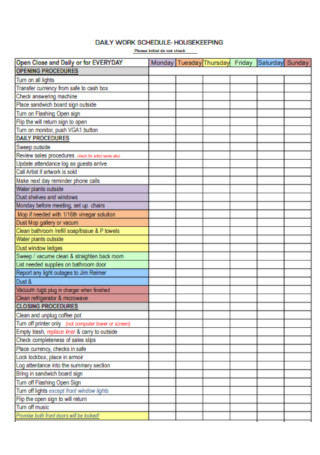
Daily Housekeeping Work Schedule
download now -
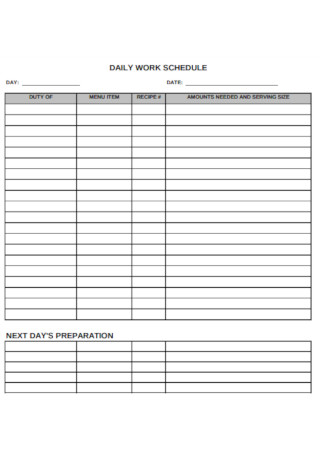
Simple Daily Work Schedule
download now -
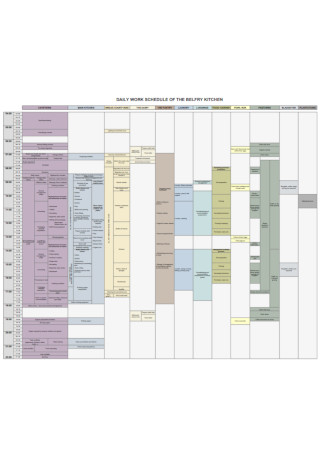
Sample Daily Kitchen Work Schedule
download now -
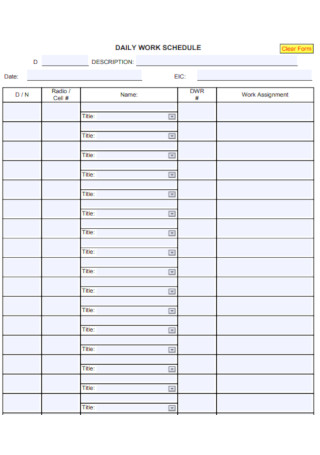
Basic Daily Work Schedule
download now -
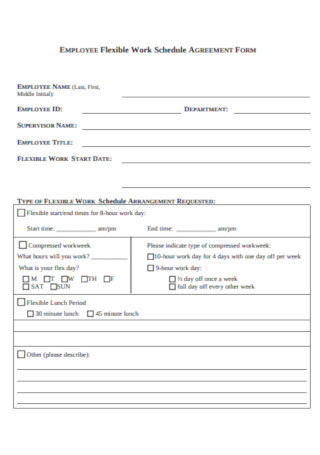
Employee Daily Flexible Work Schedule
download now -
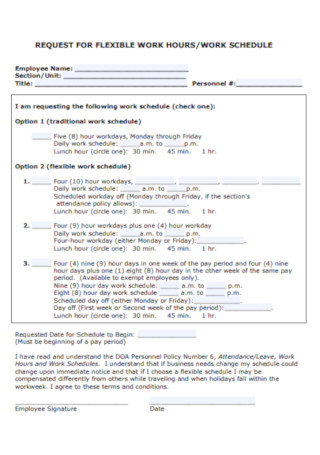
Daily Work Flexible Schedule Template
download now -
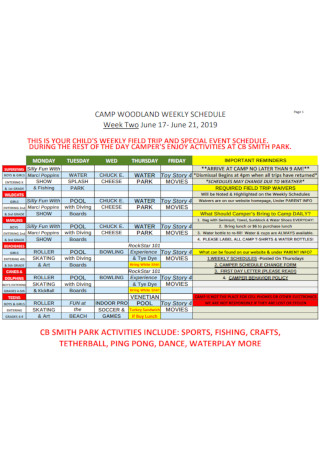
Sample Daily Child Work Schedule Template
download now -
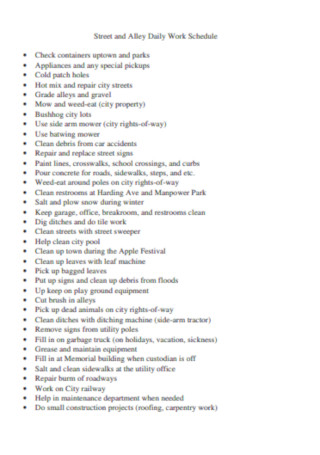
Daily Street Work Schedule
download now -
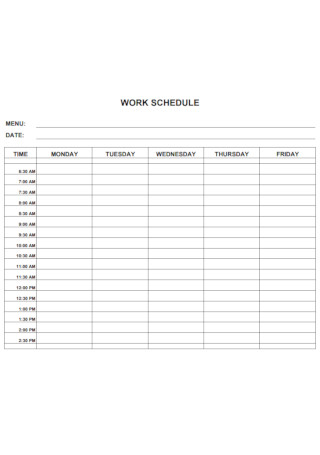
Standard Daily Work Schedule
download now -
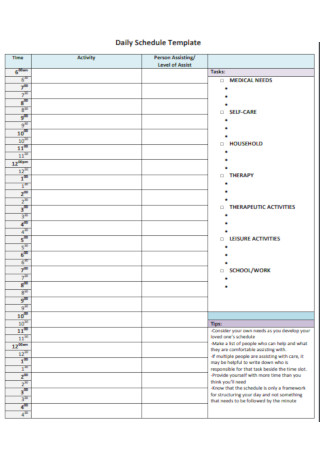
Daily Work Activity Schedule Template
download now -

Sample Daily Work Schedule Proposal Template
download now -
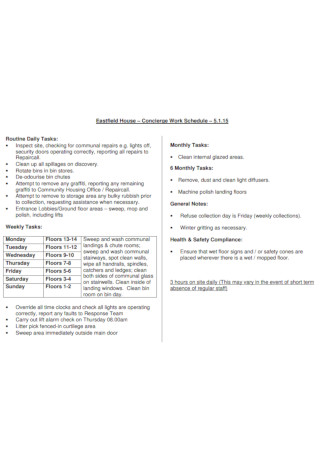
Sample Daily House Work Schedule
download now -
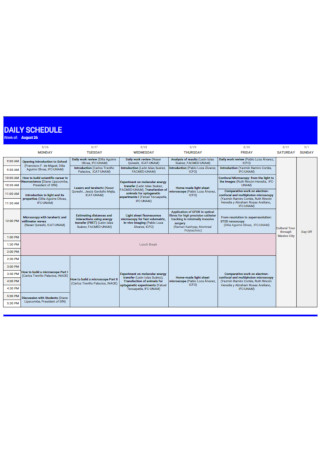
Formal Daily Work Schedule
download now -
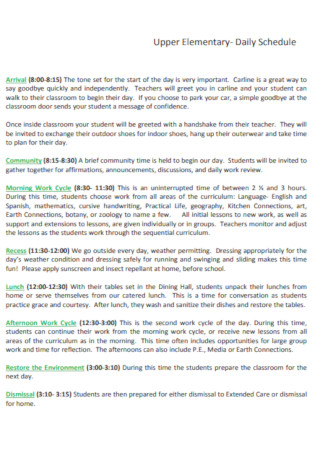
Upper Elementary Daily Work Schedule
download now -

Infant Daily Work Schedule
download now -
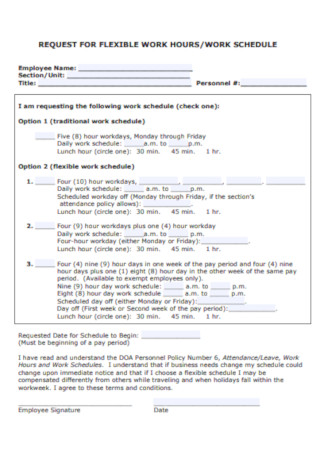
Daily Work Hours Schedule
download now -
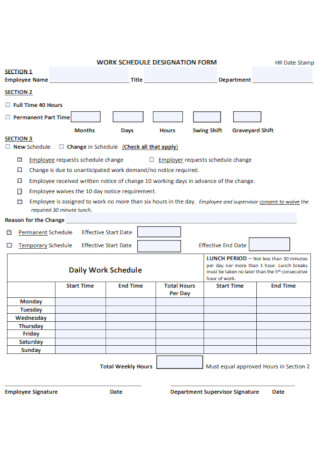
Daily Work Schedule Designation Form Template
download now -
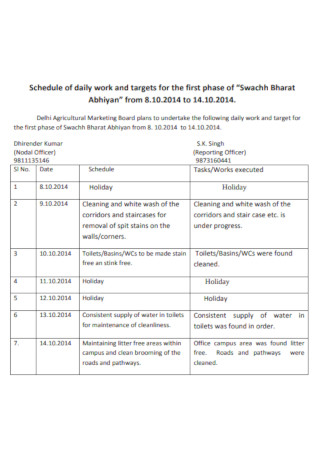
Daily Work Target Schedule Template
download now -
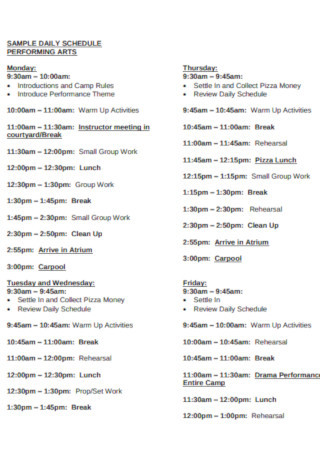
Daily Work Performing Schedule Template
download now
FREE Daily Work Schedule s to Download
50+ Sample Daily Work Schedule Templates
Sample Daily Work Schedules
What Is a Daily Work Schedule?
Types of Daily Work Schedules
Factors to Consider When Crafting the Best Daily Work Schedule
7 Steps for Creating an Efficient Daily Work Schedule
Benefits of Making an Effective Daily Work Schedule
Do’s and Don’ts for Developing a Successful Daily Work Schedule
FAQs
Is a daily work schedule necessary?
What are the benefits of having a daily work schedule?
Do I need to follow my daily work schedule?
50+ Sample Daily Work Schedule Templates
What Is a Daily Work Schedule?
A daily work schedule is a tool used by organizations, teams, and individuals to make sure that they are aware of the things that they have to do in a day’s time. A simple daily work schedule contains the time frames in which particular activities should be done. It can also provide deadlines, new objectives, and goals depending on the range of tasks that are needed to be done by a single person or a group of people.
The average working hours spent by full-time workers in the United States daily is 8.5 hours, according to the U.S Bureau of Labor and Statistic 2018 report.
According to the 2018 Bureau of Labor Statistics figures, 82 percent of working adults claimed to do some or all of their work at the workplace, compared to the 24 percent who said they did their work at home.
Employed individuals also stated to have spent 7.9 hours working at their workplace compared to the 2.9 hours at home.
Types of Daily Work Schedules
Hectic schedules can overwhelm people. Whether you are an individual or a part of a team, relying on a daily work schedule is very important so you can perform well and deliver what is expected from you. You do not need to create a lot of documents and scheduling tools. A daily work schedule is enough to ensure that you will keep yourself going the entire day up until you have already fulfilled all your tasks, responsibilities, and obligations. there are different kinds of daily work schedules which are made depending on your circumstance and the nature of your daily work processes. Some types of daily work schedules include the following:
1. Daily Employee Work Schedule
An employee work schedule that is done and planned on a daily basis is an important document that is created by individual professionals who need to manage their time in the office or in a given business location the best way possible. Employee daily work schedules help a lot in terms of maximizing one’s work hours since it defines all of the call-to-actions that must be done by an individual to fulfill daily work requirements efficiently.
2. Daily Team Work Schedule
A daily team work schedule is a great way to ensure the dynamics of a team or a department every single day. There are a lot of things that are needed to be looked into when you are working with a group of people which is why a daily work schedule can come in handy if you want to focus on both the individual and group tasks of your members.
3. Daily Project Work Schedule
A daily project work schedule is a special scheduling tool that is used for project-based endeavors. If you are dealing with a particular project, it is most likely that you are given specific deadlines. You have to know the duration of time in which you can deliver all project requirements to ensure that you can provide the expected project output in a timely manner. Your daily project work schedule can help you a lot especially if you will clearly and completely indicate your specific project resource usage and task designation on a day-to-day basis.
Factors to Consider When Crafting the Best Daily Work Schedule
You only have a limited number of hours per day in the workplace. With this, you have to make sure that you will do your best to achieve your daily objectives within the time that you are given. By having a daily work schedule, you can make sure that particular tasks are prioritized in a way that can optimize your efforts, time, energy, and resources. If you want to develop a daily work schedule, there are several things that you have to look into. A few of the factors that you have to consider as you craft the best daily work schedule are as follows:
7 Steps for Creating an Efficient Daily Work Schedule
Your daily work schedule should not ruin your day. If you cannot create a daily work schedule effectively, it may result to frustration. With this, it is very important for your daily work scheduling tool to be measurable, attainable, and realistic. You need to have a time-bound listing of your tasks so that you can make sure that you can execute all of these in consideration of the daily timeline that you have set. To create a daily work schedule the best way possible, you should be mindful of the document development steps that you will take. Here are seven steps which, when followed accordingly and implemented successfully, can lead to the creation of an efficient daily work schedule:
Step 1: Find the Daily Work Schedule Template That You Prefer to Use as a Formatting Guide
Look for a work schedule template that is fitted with the requirements of your daily work scheduling. We recommend you to use a daily work schedule template as this tool can help you be straightforward when identifying the format and features that can work well with your daily work management efforts and systems.
Step 2: Know the Scope and Limitations of the Daily Work Schedule Which You Plan to Use
You have to be aware of the range of the daily work schedule’s usage. How many working hours do you have in a day? How many of these are allotted for work and for break? Be aware of how your daily schedule will be broken down into manageable pieces. Through this, you can become more specific with how you can make the most out of the daily work schedule’s availability.
Step 3: Describe All of the Tasks That You Have to Complete
List down all of the activities that you need to do in a day’s time. Properly divide your item specifications. Identify call-to-actions that are parts of a project, your daily work responsibilities, special circumstances, and unexpected events. Doing this can enable you to know your priority. More so, this can help you to measure the weight of each call-to-action which in turn can prepare you when it comes to allocating the suitable time frames for each activity.
Step 4: Identify the Number of Employees Included in the Schedule
If you will use a daily work schedule to manage the time of an entire team, it is important for you to know the number of people who will be given specific task designations. Proper manpower allocation can help you become more strategic in ensuring that all activities will be done in a day’s time. Since you are dealing with many individuals, you can look into their expertise and align it with the requirements of each task. Through this, you can use your workforce effectively while maintaining the efficiency of your daily time usage.
Step 5: Track Your Daily Work Schedule Based on Operational Routines and Requirements
Once you are done with the alignment of your schedule with the tasks of your workforce, you can already focus on the incorporation of your daily work schedule usage with the operations of your business. Identify the routines that can easily be done with the help of the daily work schedule as well as the requirements that you can properly deliver through appropriate time management. Get the insights, comments, and recommendations of the human resource department and the management so you can still modify the daily work schedule based on their liking.
Step 6: Refine the Features of the Daily Work Schedule And Create Any Changes, If Necessary
After the daily work schedule has already been reviewed, make sure to update the document from time to time. It is not always that you need to do the same tasks every single day. Hence, you have to create necessary changes depending on the shifts of your workloads and special assignments. Modify the specifications of the daily work schedule based on operational requirements and other factors that can contribute to the document’s successful usage. Polish the entirety of the daily work schedule so it will be easier for all involved entities to update the document when needed.
Step 7: Monitor the Daily Work Schedule
Always look into the monitoring and management of the daily work schedule. Assign a person who will focus on the document’s usage. You can ask the manager or the administrator of a particular department to do this so to make sure that the content specifications of the daily work schedule are applicable with the day-to-day operations of the team.
Benefits of Making an Effective Daily Work Schedule
You should not over-schedule as this can result to disengagement. It will also be easier to demotivate yourself if the only thing that you can see is the pile of tasks that you cannot do anymore because of time constraints. Your daily work schedule can serve as a guide which can show you how you can use your time wisely. Allot proper timing for specific work allocations so the usage of the daily work schedule can truly be beneficial on your part. To further appreciate the particular scheduling document, the benefits of making an effective daily work schedule include the following:
Do’s and Don’ts for Developing a Successful Daily Work Schedule
You have to know your priorities so you can prepare yourself for the things that you have to do at a given day. Identify the key points of your focus so you can easily use the daily work schedule to your advantage. Be consistent with following your time frames as respecting the document also means that you are respecting your time and the time of your stakeholders. Aside from these items, there are still other tips that can enable you to create the best schedule for your daily work processes. Here are some of the guidelines that you can incorporate in the effective development of a successful daily work schedule:
Do’s
1. Do Consult Your Team When Making a Daily Work Schedule
Set a brainstorming session or a meeting that can help you get insights from your team members. Aside from making sure that the daily tasks of your employees are specified in their employment contracts, it is also essential for you to let them be aware of the tools that will be used to monitor their work time usage. This can prepare them in terms of identifying the ways on how their time will be maximized in the workplace. Being able to successfully focus on these matters can help your employees easily understand the need for the daily work schedule’s usage.
2. Do Understand the Needs of the Business and the Demands of Consumers When Developing a Daily Work Schedule
A daily work schedule used in a business setting should always be considerate not only of the workforce whose schedules will be managed but also of the target audience of the organization whose needs must be supplied. It is important for your daily work schedule to not rely on what your current workforce can only deliver. You have to let them know the standards that they should meet on a daily basis so that they can function in the best way possible. Present baselines and key performance indicators to support the actual incorporation of the daily work schedule in your management practices and related processes.
3. Do Ensure That Your Daily Work Schedule Is Realistic
Set time frames that are achievable. You cannot just state in your daily work schedule that you can deliver two days worth of work in just a number of hours. You need to be realistic so to not disappoint your stakeholders or target audience. It is necessary for your work schedule to be based on your capabilities and capacity to execute specific call-to-action on a daily basis. Never over-promise as this can bring a lot of negative effects on your operations especially with regards to the dynamics of your departments.
Don’ts
1. Don’t Make Your Daily Work Schedule Overwhelming
Never intimidate your workforce with the daily work schedule that you will develop. It is important for you to introduce the document’s usage in a transparent manner so that your team members can understand how they can fit all of their responsibilities in a day’s time. Do not create an overwhelming daily work schedule as this can only demotivate your workforce rather than inspire them to do better.
2. Don’t Overlook the Presence of Potential Challenges, Distractions, and Roadblocks
When creating a daily work schedule, you should provide white spaces that you can use for emergencies. Do not fill your daily work schedule up to the point that you cannot insert other call-to-actions anymore as this can create challenges whenever you add a thing or two to your daily work operations. Prepare for potential distractions like unexpected tasks and unavailability of resources so you can have back-ups that can still enable you to utilize your time while waiting for solutions to be developed.
3. Don’t Allow Your Daily Work Schedule to Be Disorganized
From the layout features up to its content specifications, make sure that your daily work schedule is systematically developed. Incorporate organization in all the parts and elements of the daily work schedule so you and your stakeholders can easily use and update it. Never rely on a substandard daily work schedule as any poorly-developed segments of the document can result in misunderstandings, scheduling confusion, and tool misuse.
FAQs
Is a daily work schedule necessary?
Well, if you are aiming for productive work every day, then yes, having a daily work schedule is necessary. Whether you are an employee or someones who owns a company, if you want to excel in your work on a day-to-day basis, then scheduling your daily workload is essential.
What are the benefits of having a daily work schedule?
A daily work schedule does not only allows you to outline and organize your daily workload and make everything convenient. A daily work schedule enables you to have better time management, work-focus, self-discipline, and a healthy work-life balance. It also allows you to prioritize works that match the daily needs of the company, achieve company goals on time, and reduces procrastination.
Do I need to follow my daily work schedule?
Yes. The daily work schedule outlines your everyday workload and shows the amount of time that you need to spend to finish each work task. It helps to fuel your daily work productivity. Besides, following your daily work schedule shows good habits.
If you need help in terms of creating a specific daily work schedule, make sure to select a suitable reference from the list of templates and samples above. Be particular with the selection of the document development guide that you need as this can enable you to come up with the daily work schedule which can truly contribute to the betterment of your daily task management.
